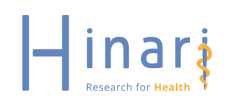Factores de riesgo cardiovascular en pacientes con accidente cerebrovascular
Resumen
Introducción: la enfermedad cerebro vascular es causa de discapacidad y de muerte en las personas. Se presenta cada vez más en la población de adultos jóvenes.
Objetivo: determinar los factores de riesgo cardiovascular en pacientes con accidente cerebro vascular ingresados en el Hospital de Clínicas (San Lorenzo, Paraguay).
Material y método: diseño observacional, descriptivo, retrospectivo de corte transversal, que incluyó a pacientes adultos con diagnóstico de accidente cerebro vascular en la Unidad de ictus del Servicio de Urgencias del Hospital de Clínicas desde enero 2015 a marzo 2018. Se determinaron las variables demográficas, diagnóstico de accidente cerebro vascular, antecedentes de ictus previo, presencia de factores de riesgo cardiovascular (hipertensión arterial, diabetes mellitus, consumo de tabaco y fibrilación auricular).
Resultados: se incluyeron 618 pacientes con diagnóstico de accidente cerebro vascular, de los cuales 119 pacientes (19,3%) fueron menores de 50 años, de los cuales 75 (63%) fueron de tipo isquémico. Los factores de riesgo cardiovascular más frecuentes fueron la hipertensión arterial (47,9%) y la diabetes mellitus (9,2%).
Conclusión: el tipo más frecuente de accidente cerebro vascular fue el isquémico. Los factores de riesgo cardiovascular más frecuentes en los adultos jóvenes con accidente cerebro vascular fueron la hipertensión arterial y la diabetes mellitus.
Citas
Hickey JV, Livesay SL. The continuum of stroke Care : An interprofessional approach to evidence-based care. Philadelphia: Wolters Kluwer Health; 2016.
Owolabi M, Olowoyo P, Popoola F, Lackland D, Jenkins C, Arulogun O, et al. The epidemiology of stroke in Africa: A systematic review of existing methods and new approaches. J Clin Hypertens (Greenwich). 2018; 20(1):47-55. doi: 10.1111/jch.13152.
Tsivgoulis G, Patousi A, Pikilidou M, Birbilis T, Katsanos AH, Mantatzis M, et al. Stroke incidence and outcomes in northeastern greece: The evros stroke registry. Stroke. 2018; 49(2):288–95.
Grifoni E, Giglio D, Guazzini G, Cosentino E, Latini E, Dei A, et al. Age-related burden and characteristics of embolic stroke of undetermined source in the real world clinical practice. J Thromb Thrombolysis. 2019 Sep 7. doi: 10.1007/s11239-019-01951-5.
Bergman EM, Henriksson KM, Åsberg S, Farahmand B, Terént A. National registry-based case-control study: comorbidity and stroke in young adults. Acta Neurol Scand. 2015; 131(6):394–9.
George MG, Tong X, Bowman BA. Prevalence of cardiovascular risk factors and strokes in younger adults. JAMA Neurol. 2017; 74(6):695–703.
Ferro JM, Massaro AR, Mas JL. Aetiological diagnosis of ischemic stroke in Young adults. Lancet Neurol. 2010; 9(11):1085-96.
Rodríguez Flores O, Pérez Guerra LE, Carvajal Ferrer N, Jaime Valdés LM, Ferrer Suárez V, Ballate González OL. Factores de riesgo asociados a la enfermedad cerebrovascular en pacientes del Policlínico “Marta Abreu.” Acta Méd Cent. 2018; 12(2):148–55.
Arbella López GR, Gómez Peña L, Calzadilla González B, Padrosa Santos D, Cruz Carballosa Y, Cruz Suárez B. Alteraciones electrocardiográficas en la fase aguda de la enfermedad cerebrovascular isquémica. Panorama Cuba y Salud. 2017; 12(2):29–34.
Guo L, Guo X, Chang Y, Li Z, Yu S, Yang H, Sun Y. Modified ideal cardiovascular health status is associated with lower prevalence of stroke in rural northeast China. Int J Environ Res Public Health. 2016; 13(2):207.
Sahto AA, Shahzad A, Ruqayya. Ischemic and hemorrhagic stroke; Comparative study to assess the frequency of ischemic and hemorrhagic stroke and associated risk factors in patients with hypertension. Professional Med J. 2019; 26(2):253–9.
Rojas JI, Zurru MC, Liliana Patrucco L, Romano M, Riccio PM, Cristiano E. Registro de enfermedad cerebrovascular isquémica. Medicina (B Aires). 2006; 66(6):547-51.
Feigin VL, Norrving B, George MG, Foltz JL, Roth GA, Mensah GA. Prevention of stroke: a strategic global imperative. Nat Rev Neurol. 2016; 12(9):501–12.
Gaye Saavedra A, Brunet F, Albisu S, Higgie J, Preve F, Camejo C, Salamano R. Ataque cerebrovascular en jóvenes en la Unidad de ACV del Hospital de Clínicas de Montevideo. An Facultad Med (Univ Repúb Urug). 2015; 2(1):70-6.
Díaz-Escobar L, Flores A, Seró-Ballesteros L, Otto Ch, Mernes R, Pedrozo F, et al. Frequency of hypertension, age, and gender in cerebrovascular disease in Paraguay. Rev Mex Neuroci. 2019; 20(3):130–5.
González-Gómez FJ, Pérez-Torre P, De Felipe A, Vera R, Matute C, Cruz-Culebras A, et al. Stroke in young adults: Incidence rate, risk factors, treatment and prognosis. Rev clín esp. 2016; 216(7):345–51.
Real Delor RE, Jara Castillo GF. Pronóstico vital y secuelas neurológicas en los pacientes con accidente cerebrovascular del Hospital Nacional, Paraguay. Rev cubana med. 2016; 55(3):181–9.
Hosseini AA, Sobhani-Rad D, Ghandehari K, Benamer HT. Frequency and clinical patterns of stroke in Iran - Systematic and critical review. BMC Neurol. 2010; 10:72. doi: 10.1186/1471-2377-10-72.
Andersen KK, Olsen TS. The obesity paradox in stroke: lower mortality and lower risk of readmission for recurrent stroke in obese stroke patients. Int J Stroke. 2015; 10(1):99–104.
Henriksson KM, Farahmand B, Åsberg S, Edvardsson N, Terént A. Comparison of cardiovascular risk factors and survival in patients with ischemic or hemorrhagic stroke. Int J Stroke. 2012 Jun;7(4):276-81.
Andersen KK, Andersen ZJ, Olsen TS. Age- and gender-specific prevalence of cardiovascular risk factors in 40 102 patients with first-ever ischemic stroke: a Nationwide Danish Study. Stroke. 2010; 41(12):2768–74.
Horstmann S, Rizos T, Rauch G, Fuchs M, Arden C, Veltkamp R. Atrial fibrillation and prestroke cognitive impairment in stroke. J Neurol. 2014; 261(3):546–53.
Arboix A. Cardiovascular risk factors for acute stroke: Risk profiles in the different subtypes of ischemic stroke. World J Clin Cases. 2015; 3(5):418–29.
Gómez C, Guillén C. Enfermedades crónicas no transmisibles (ECNT) y los impuestos al consumo dañino /Internet/ 2015 /citado 17 Jul 2019/. Disponible en: http://www.decidamos.org.py/fiscalidad/wp-content/uploads/2018/06/Cap-10-Enfermedades-cr%C3%B3nicas-no-transmisibles-ECNT-y-los-impuestos-al-consumo-da%C3%B1ino.pdf
Alvarez-Sabin J, Quintana M, Masjuan J, Oliva-Moreno J, Mar J, Gonzalez-Rojas N, et al. Economic impact of patients admitted to stroke units in Spain. Eur J Health Econ. 2017; 18(4):449–58.
de Campos LM, Martins BM, Cabral NL, Franco SC, Pontes-Neto OM, Mazin SC, Dos Reis FI. How many patients become functionally dependent after a stroke? A 3-year population-based study in joinville, Brazil. PLoS One. 2017; 12(1): e0170204. doi: 10.1371/journal.pone.0170204.
Heijnen RW, Evers SM, van der Weijden TD, Limburg M, Schols JM. The cost effectiveness of an early transition from hospital to nursing home for stroke patients: design of a comparative study. BMC Public Health. 2010; 10:279. doi: 10.1186/1471-2458-10-279.

















